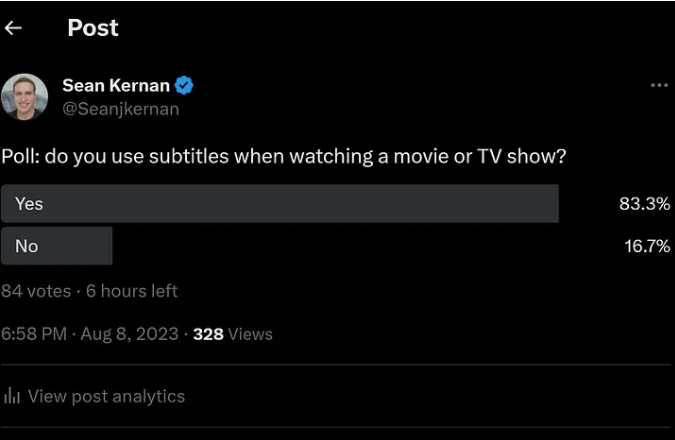As we all stream more and more movies at home rather than go to the theater, many people are struggling to hear the dialog. The car crashes, gun shots, and fights come through loud and clear. The background music does its job to enhance the mood without distracting us from the action. But the dialog? Why is it so hard to understand what the actors are saying?
And I suspect that, like me, you are turning on subtitles to compensate for the seemingly poor sound quality. Writing for the online forum “Medium,” Sean Kernan posted this graphic:

Sean goes on to explain the three different kinds of sound—sound effects, music, and dialog—and how sound engineers struggle to find an acceptable balance, a task made more difficult by two other factors.
One is technology. If you’ve ever attended a live play, you know that the actors speak loudly and enunciate clearly to ensure that no one in the audience misses out on the verbal interplay. And those of you who have had experience with film or video production know that not so many years ago, there was a single boom mic above the actor(s) to catch the dialog and the performer(s) knew they had to speak clearly enough for the mic to pick up what was being said. These days, however, there are usually two boom mics, as well as myriad tiny mics cleverly hidden on the actor’s body that combine to make sure every sound is picked up. Unfortunately, however, this has led to performers mumbling their lines.
Turning up the volume on your sound bar is not going to help those mumbled lines become any clearer, as the sound effects and music get louder too, tending to drown out the dialog.
Factor number two is a combination of two things—the fact that sound recording and editing software isn’t standardized and that the sound engineer’s primary objective is to optimize the sound track for in-theater, big-screen viewing with the latest and greatest Dolby X.x sound systems.
Multiple sources vie with each other for sound software dominance and the result can be that what sounds fine with a recording being listened to on a complementary output system, doesn’t sound so hot on another speaker/amplifier combo.
And your 72″ OLED flat screen’s speakers are no match for a movie theater’s latest version of Dolby.
I recommend you read Kernan’s post for yourself. It’s a well-written and enlightening piece.
https://seanjkernan.medium.com/why-movie-dialogue-is-so-hard-to-understand-these-days-f8948881798a

Leave a comment